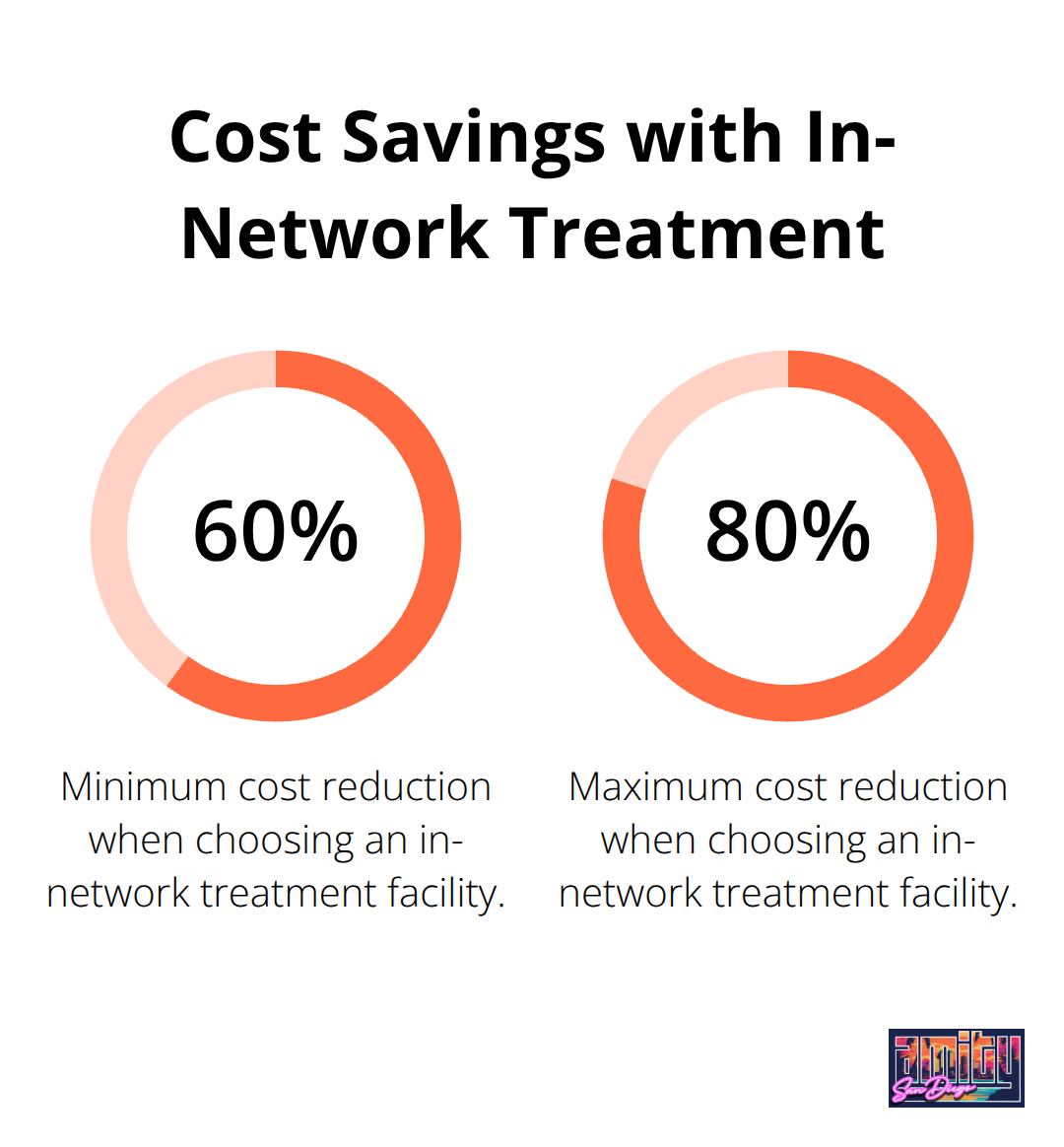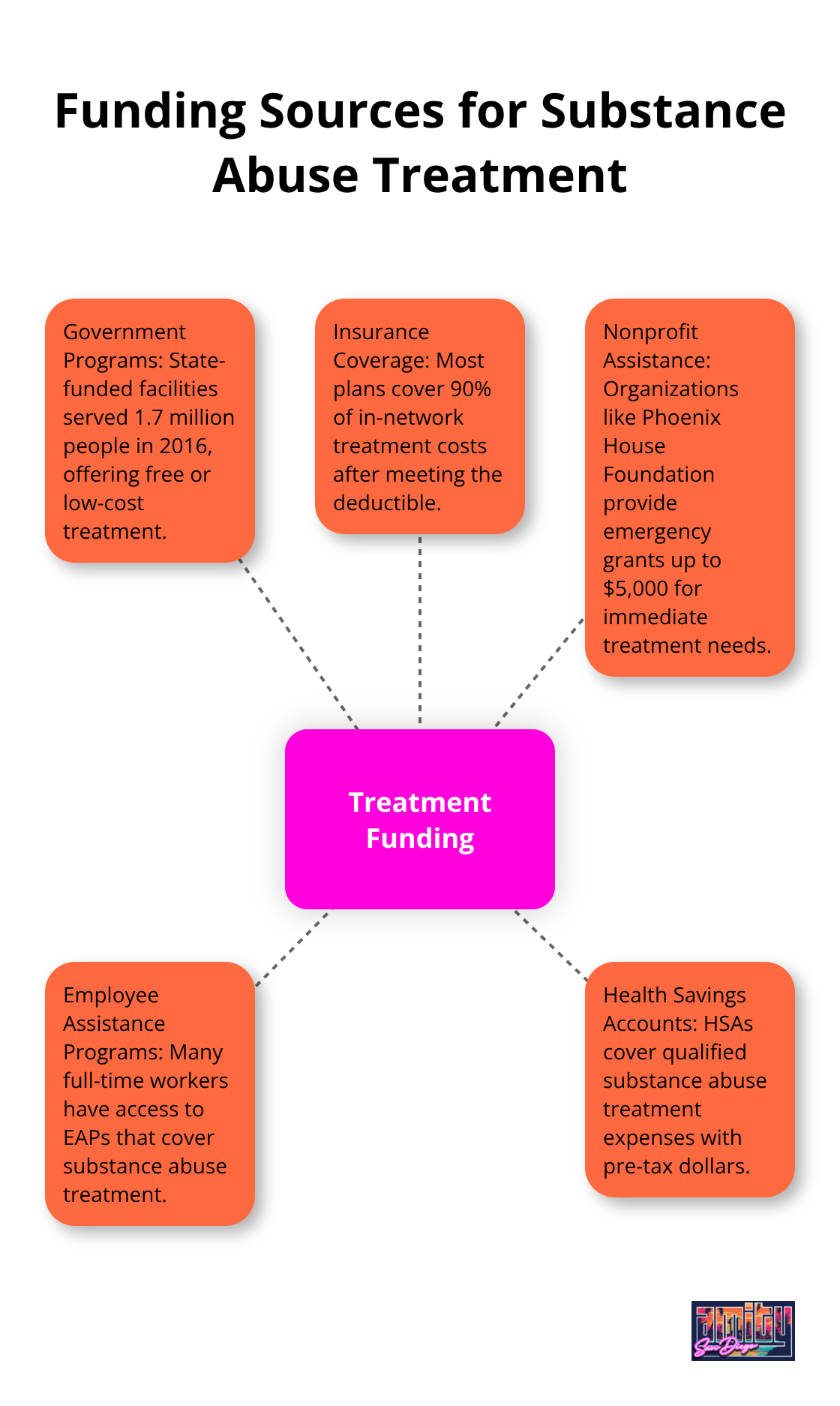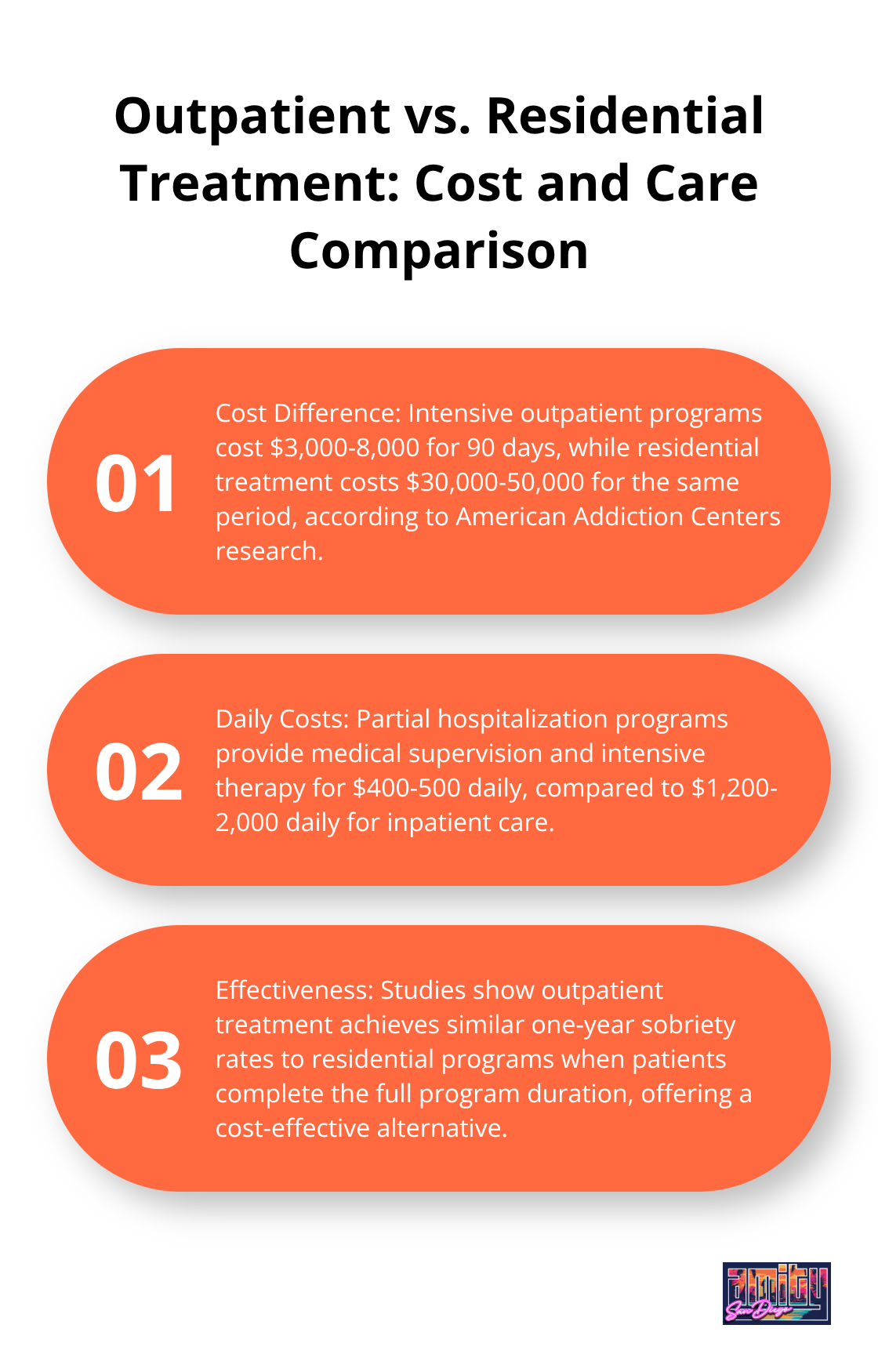The cost of treatment shouldn’t prevent anyone from getting the help they need. Many people avoid seeking care because they believe they can’t afford it.
We at Amity San Diego know that funding for substance abuse treatment programs exists through multiple channels. Insurance coverage, government programs, and nonprofit assistance can make recovery accessible regardless of your financial situation.
What Does Your Insurance Actually Cover for Treatment
Most insurance plans include substance abuse treatment coverage, but the details matter more than the basic benefit. The Mental Health Parity and Addiction Equity Act requires health insurance plans to cover mental health and substance use disorders in a similar way to medical and surgical benefits. This means your insurance cannot impose higher copays, deductibles, or visit limits for addiction treatment than for other medical conditions.
Check Your Specific Benefits Before You Start Treatment
Call your insurance company and ask for your exact coverage limits for outpatient and inpatient substance abuse treatment. Request the number of covered sessions per year, your copay amounts, and annual deductible requirements. Most plans cover 90% of in-network treatment costs after you meet your deductible. Write down the representative’s name and reference number for your call (insurance companies often provide different information between calls).
In-Network Providers Save You Thousands
You can reduce your out-of-pocket costs by 60-80% when you choose an in-network treatment facility compared to out-of-network options. In-network facilities have rates they negotiate with your insurer, which typically results in copays of $20-50 per session instead of full rates. Out-of-network treatment can cost $200-400 per session, with you paying the majority. Your insurance company’s website lists approved providers, but call facilities directly to confirm they accept your specific plan and have availability.

Appeal Denied Claims Within 60 Days
Insurance companies deny substance abuse treatment claims initially, with denials often resulting from insufficient documentation or prior authorization requirements rather than actual lack of coverage. File appeals immediately when companies deny claims (you typically have 60 days from the denial date). Include letters from your treatment provider that explain medical necessity and reference your state’s mental health parity laws in your appeal.
Document Everything for Maximum Coverage
Keep detailed records of all communication with your insurance company and treatment providers. Save emails, take notes during phone calls, and request written confirmation of coverage decisions. This documentation becomes vital if you need to file appeals or dispute charges later. Many insurance representatives lack complete knowledge of substance abuse benefits, so written confirmation protects you from coverage gaps. Consider verifying your insurance through professional treatment centers that can help navigate complex coverage requirements.
Government programs and nonprofit assistance offer additional paths to treatment when insurance falls short or when you lack coverage entirely. For comprehensive support, explore addiction treatment San Diego options that work with various insurance plans.
Where to Find Free and Low-Cost Treatment Programs
Government programs provide the most reliable path to free substance abuse treatment when insurance coverage isn’t available. The Substance Abuse and Mental Health Services Administration distributes funding through state block grants, which fund treatment centers that charge nothing or use fees based on your income. California alone receives approximately $150 million yearly to support these programs. State-funded facilities served 1.7 million people in 2016, with most patients receiving treatment for opioid and alcohol addiction at no cost.

Apply for State-Funded Programs Despite Wait Times
California’s Department of Health Care Services operates county-based treatment programs that provide free residential and outpatient services for uninsured residents. Los Angeles County offers same-day assessment and placement through their ACCESS Center, while San Diego County maintains a centralized intake system that processes applications within 72 hours. Wait times range from immediate placement to 30 days (depending on treatment level), but programs cannot legally turn away individuals who meet income requirements. Your county health department maintains current availability lists and can refer you to programs with shorter wait times. Veterans receive priority placement through specialized tracks that integrate with VA benefits.
Access Nonprofit and Foundation Grants Quickly
The National Association of Addiction Treatment Providers maintains research databases with growing samples of treatment outcomes data. The Phoenix House Foundation provides emergency grants up to $5,000 for immediate treatment needs and processes applications within five business days. Local community foundations often fund treatment through discretionary grants that don’t require lengthy applications. Religious organizations like Catholic Charities and Jewish Family Services allocate specific budgets for substance abuse treatment regardless of religious affiliation. These programs typically cover 30-90 days of treatment and require only basic income verification rather than extensive paperwork.
Use Employee Assistance Programs and Health Savings Accounts
Employee Assistance Programs cover substance abuse treatment for many full-time workers, with utilization rates varying widely across different programs. Most EAPs provide immediate access to assessment and short-term counseling at no cost, plus referrals to longer-term treatment with partial funding. Health Savings Accounts and Flexible Spending Accounts cover all qualified substance abuse treatment expenses with pre-tax dollars, which effectively reduces treatment costs by your tax rate. You can reimburse yourself for copays, deductibles, and even transportation to treatment appointments with HSA funds. Insurance verification can help you understand exactly what coverage you have available.
Even with these funding sources available, you can take additional steps to reduce your overall treatment costs and make recovery more affordable. For comprehensive addiction treatment San Diego options, professional guidance can help you navigate these various funding opportunities.
How to Cut Treatment Costs Without Sacrificing Quality
Treatment facilities routinely accept 40-60% less than their published rates when patients negotiate payment plans directly. Most facilities prefer guaranteed monthly payments over unpaid bills sent to collections (which recover only 15-20% of original amounts according to Healthcare Financial Management Association data). Contact the billing department before treatment starts and request a cash discount for upfront payment or propose a realistic monthly payment schedule.
Negotiate Direct Payment Discounts and Sliding Scale Options
Private facilities often reduce total costs by 30% for patients who pay within 30 days. Nonprofit centers typically offer fees based on income that can reduce costs to as low as $50 per session for families who earn under $40,000 annually. Ask billing departments about hardship programs that many facilities maintain but don’t advertise publicly. These programs can waive application fees, reduce session costs, or extend payment terms beyond standard options.
Choose Outpatient Programs to Save on Treatment Costs
Intensive outpatient programs cost $3,000-8,000 for 90 days compared to $30,000-50,000 for residential treatment according to American Addiction Centers research. Partial hospitalization programs provide medical supervision and intensive therapy for $400-500 daily versus $1,200-2,000 daily for inpatient care. Studies show outpatient treatment achieves similar one-year sobriety rates to residential programs when patients complete the full program duration. Your insurance typically covers more outpatient sessions with lower copays than inpatient days.

Participate in Clinical Trials for Free Evidence-Based Treatment
The National Institute on Drug Abuse funds over 200 active clinical trials that test new addiction treatments, with participants who receive free medication, counseling, and medical monitoring. University of California San Diego currently enrolls participants in studies for opioid addiction treatment that provide free buprenorphine and counseling worth $15,000 over six months. Clinical trial participants receive more intensive monitoring than standard treatment patients, with weekly physician visits and 24/7 crisis support. Research shows clinical trial participants have higher completion rates than standard care patients due to increased support and accountability, making this option both cost-effective and clinically superior. For comprehensive addiction treatment San Diego options, consider exploring both traditional and clinical trial opportunities.
Final Thoughts
Multiple funding streams make substance abuse treatment accessible regardless of your financial situation. Insurance coverage through mental health parity laws, government block grants, nonprofit assistance programs, and clinical trials provide pathways to recovery without overwhelming costs. State-funded programs served 1.7 million people in 2016, while employee assistance programs and health savings accounts offer additional support for working individuals.
Financial barriers should never prevent you from seeking help. Every day you delay treatment increases health risks and potential costs. The average investment of $1,583 per person in substance abuse treatment saves $4 in healthcare costs and $7 in law enforcement expenses (according to research data).
We at Amity San Diego help verify insurance benefits and connect you with appropriate resources for your situation. Our team works with most major insurance plans and offers flexible payment options to make evidence-based treatment accessible. Contact Amity San Diego today for a free confidential assessment and insurance verification to begin your recovery journey.

